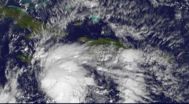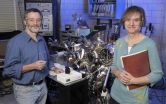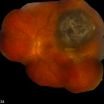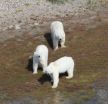(Press-News.org) Vomiting is unpleasant. Nearly 30% of all patients suffer from nausea and vomiting after surgery. The financial repercussions of this are longer patient stays in the recovery room, with increased need for personnel. Appropriate prophylaxis and treatment can prevent postoperative nausea and vomiting. In a systematic review of the literature, Dirk Rüsch and co-authors investigate how treatment recommendations for nausea after general anesthesia can be improved (Dtsch Arztebl Int 2010; 107[42]: 733 741).
The pathogenesis of postoperative nausea remains unclear, but it has been possible to identify some risk factors. Patient-dependent risk factors include female sex, susceptibility to motion sickness, and nonsmoker status. On the basis of such factors, established prognosis systems can be used to assess risks and identify high-risk patients.
There are compatible, thoroughly evaluated antiemetics available for prophylaxis in children and adults. When these substances are combined from groups with different active ingredients, their effects are cumulative.
To treat postoperative nausea, the authors recommend swift administration of drugs and close monitoring.
INFORMATION:
Contact:
kranke_p@klinik.uni-wuerzburg.de
http://www.aerzteblatt.de/v4/archiv/pdf.asp?id=78885
Postoperative vomiting
2010-11-05
ELSE PRESS RELEASES FROM THIS DATE:
NYU researchers find corn starch solution can help shape solid materials
2010-11-05
New York University researchers have developed a method to shape solid materials using a corn starch solution. The process, devised by researchers in NYU's Courant Institute of Mathematical Sciences and Department of Physics, offers a potential technique for material cutting and manufacturing processes.
Their work is described in the journal Physical Review Letters.
Manufacturers use a variety of methods for shaping solid materials, ranging from laser cutting to high-speed jets of water. While altering the shape of such materials, such as glass, metal, or stone, is ...
LSU researcher participates in NIH-funded study ushering in the age of personal genomics
2010-11-05
BATON ROUGE – Genetic diseases impact millions around the world each and every day. Complex medical conditions with genetic predispositions, such as hypertension, can also weigh heavily on our lives. Susceptibility to hypertension has many genetic components and often goes undiagnosed until a person has signs of advanced disease.
Many imagine a day when science will give us the tools to discover how to work with these genetic issues and discover ways to not only diagnose, but to use them to our advantage as individuals. LSU Boyd Professor Mark Batzer and an international ...
NASA satellite data confirm a stronger Tropical Storm Tomas, hurricane warnings up
2010-11-05
NASA's infrared satellite imagery has confirmed that Tomas is intensifying as convection is strengthening and cloud tops within the system are getting colder.
Infrared imagery helps scientists detect cold top temperatures within a tropical cyclone, and Tomas' cloud tops have grown colder over the last 24 hours. Tomas showed strong convective activity in his center as indicated by high thunderstorms that were as cold as -63 degrees Fahrenheit. The colder the cloud tops, the higher and stronger the thunderstorms are that power the tropical cyclone. The infrared imagery ...
More talk, less agreement: Risk discussion can hurt consensus-building on science/technology
2010-11-05
When it comes to public issues pertaining to science and technology, "talking it out" doesn't seem to work. A new study from North Carolina State University shows that the more people discuss the risks and benefits associated with scientific endeavors, the more entrenched they become in their viewpoint – and the less likely they are to see the merit of other viewpoints.
"This research highlights the difficulty facing state and federal policy leaders when it comes to high-profile science and technology issues, such as stem cell research or global warming," says Dr. Andrew ...
Pennycress could go from nuisance weed to new source of biofuel
2010-11-05
A common roadside plant could have the right stuff to become a new source of biofuel, according to U.S. Department of Agriculture (USDA) studies.
Scientists with the Agricultural Research Service (ARS), USDA's principal intramural scientific research agency, have found that field pennycress yields impressive quantities of seeds whose oil could be used in biodiesel production.
Field pennycress belongs to the Brassicaceae family, along with canola, camelina and mustard—other prolific producers of oil-rich seeds. The ARS studies help support USDA's efforts to develop ...
Iowa State, Ames Laboratory scientists advance the understanding of the big getting bigger
2010-11-05
AMES, Iowa – Patricia Thiel of Iowa State University and the Ames Laboratory put a box of tissues to the right, a stack of coasters to the middle and a trinket box to the left.
"Nature," she said of her table-top illustration, "doesn't want lots of little things." So Thiel grabbed the smaller things and slid them into a single pile next to the bigger tissue box. "Nature wants one big thing all together, like this."
Thiel, an Iowa State Distinguished Professor of Chemistry and a faculty scientist for the U.S. Department of Energy's Ames Laboratory, and James Evans, an ...
Global food safety: Keeping food safe from farm to table
2010-11-05
Washington, DC – November 2, 2010 – Food safety problems can arise at any of multiple stages of food production, and illnesses that result from them are frequently not detected or reported, according to a new report from the American Academy of Microbiology.
The report, "Global Food Safety: Keeping Food Safe from Farm to Table," is based on a colloquium convened by the Academy in 2009. Colloquium participants with expertise in microbiology, public health, food science, and economics reviewed the current state of affairs in microbiological food safety around the world.
The ...
Gene identified for spread of deadly melanoma
2010-11-05
AUDIO:
Researchers at Washington University School of Medicine in St. Louis have identified a gene linked to the spread of melanoma of the eye. Although more research is needed, the researchers...
Click here for more information.
Researchers at Washington University School of Medicine in St. Louis have identified a gene linked to the spread of eye melanoma.
Although more research is needed, the researchers say the discovery is an important step in understanding why some ...
Missouri Botanical Garden researchers discover 8 new species in Boliva national parks
2010-11-05
(ST. LOUIS): Botanists at the Missouri Botanical Garden have described eight new plant species collected in the Madidi National Park and surrounding areas located on the eastern slopes of the Andes in northern Bolivia. The new species are from several different genera and families and are published in a recent edition of the Missouri Botanical Garden journal Novon.
Missouri Botanical Garden scientists and colleagues from the National Herbarium in La Paz, Bolivia describe Prestonia leco, Passiflora madidiana, Siphoneugena minima, Siphoneugena glabrata, Hydrocotyle apolobambensis, ...
Polar bears can't eat geese into extinction
2010-11-05
As the Arctic warms, a new cache of resources—snow goose eggs—may help sustain the polar bear population for the foreseeable future. In a new study published in an early online edition of Oikos, researchers affiliated with the Museum show that even large numbers of hungry bears repeatedly raiding nests over many years would have a difficult time eliminating all of the geese because of a mismatch in the timing of bear arrival on shore and goose egg incubation.
"There have been statements in popular literature indicating that polar bears can extirpate snow geese quickly ...



